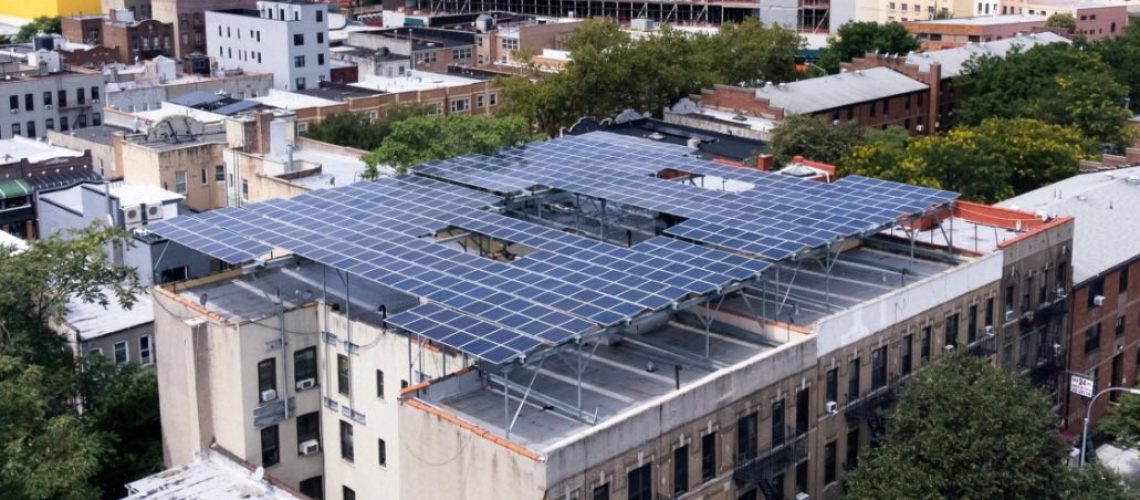Environmental justice now means equal protection from environmental harm, equal employment in the renewable energy industry, and alleviating energy poverty, says an essay in the National Urban League’s report “2023 State of Black America.”
“America is segregated, and so is pollution,” said Robert Bullard, a professor at Texas Southern University, in a special section of the “2023 State of Black America” report from the National Urban League, addressing the climate crisis and how renewable energy development can help address historic inequities. Trade group the American Council on Renewable Energy partnered with the League in releasing the special section.
Bullard’s essay, one of four published in the special section, traces the origins of the environmental justice concept, saying it was “largely absent” from the first Earth Day in April, 1970. The “dominant view of ‘environmental protection for all’” began to emerge, Bullard said, “when Black people began demanding environmental protection as a basic civil right.”
With environmental justice now encompassing employment opportunities in clean energy, Bullard said Black Americans, who constitute 13% of the U.S. population and labor force, hold only 8% of the jobs in renewable energy, energy efficiency and related fields. He also called for alleviating energy poverty and energy insecurity in Black and Latino neighborhoods, citing a study on racial inequity in household energy efficiency.
Bullard focused on the $27 billion Greenhouse Gas Reduction Fund under the Inflation Reduction Act as a means to “begin closing the racial income and wealth gap.” That fund, designed to leverage private capital for “clean energy and clean air investments,” will “create good-paying jobs,” he said, and “needs to support millions of low-income and working families that need it the most.”
Also contributing essays were Secretary Jennifer M. Granholm of the U.S. Department of Energy (DOE) and Shalanda Baker, director of DOE’s Office of Economic Impact and Diversity and Secretarial Advisor on Equity. The chief executive officers of the National Urban League and ACORE contributed a joint essay.
Baker said in her essay that “the fossil fuel industry requires a substantial, toxic footprint,” and that “certain communities,” like her father’s hometown of Port Arthur, Texas, have “become sacrifice zones” that are “more prone to an array of health and environmental hazards.”
Bullard said that frontline communities are demanding from the Biden Administration that Justice40 benefits—a plan to deliver 40% of the overall benefits of climate investments to disadvantaged communities—actually flow to meet the needs of those communities, making the “millions of good paying jobs and businesses accessible to Black and Latino workers and owners.”
Granholm noted in her essay that Black Americans have higher exposure to air pollution and associated health burdens than white Americans, and that Black households spend 43% more income on energy costs than white households. She said that DOE has “begun to make significant progress” toward achieving its Justice40 goals, and has launched an Equity Access Plan to help underrepresented groups access DOE resources.
The National Urban League is partnering with the Edison Electric Institute to identify opportunities for Urban League affiliates to partner with energy companies to diversify their talent pipeline, said the League’s CEO Marc Morial and ACORE CEO Gregory Wetstone in their essay. To aid Black and brown business owners to “expand their presence in the renewable energy supply chain,” the essay says that ACORE’s Accelerate initiative “offers important potential, but must be expanded and embraced more broadly by key organizations in the renewable sector to truly address the problem.”
The NUL-ACORE essay added that the Inflation Reduction Act’s “energy communities” provision, by encouraging renewable energy development in communities economically reliant on the fossil fuel industry, “will provide new employment avenues where they are needed most.”
Environmental justice and injustice
In reviewing the origins of the environmental justice movement, Bullard recounted a 1979 lawsuit challenging the siting of a solid waste facility in Houston, protests in North Carolina in 1982 over the dumping of toxic waste at a landfill located in the Black community, and a 1987 national study by a faith-based Black civil rights organization that correlated waste facility sites and demographic characteristics.
Bullard’s own 1990 textbook on environmental justice was the first to show that environmental vulnerability “mapped closely” with historical patterns of racial discrimination, he said.
Bullard cited research from the past few years documenting many more injustices:
- People of color live with more air pollution than Whites in 46 states.
- African Americans are exposed to 1.54 times more fine particulate matter than white people, while Hispanic Americans are exposed to 1.2 times more.
- People living in racially segregated neighborhoods breathe air that is three times more toxic than those in neighborhoods with low racial segregation.
- Black Americans and Latinos breathe in 56% and 63% more air pollution than they cause, respectively, while white Americans breathe in 17% less air pollution than they cause.
- Climate impacts such as heat waves, poor air quality and flooding will disproportionately affect people of color communities that are least able to prepare for them or recover from them.
Baker added in her essay that “the coal industry’s barbaric practice of blasting the tops off mountains has also left deep scars on poor, white communities.” These white communities “should tie their fates to those fighting for energy justice in Black and brown communities,” she said.
In a statement introducing the essays, the special section presented survey results showing that Hispanic/Latino and Black Americans, “who have been disproportionately affected by our nation’s energy system for decades,” are “more likely to be alarmed or concerned about global warming than are Whites.”
Placing the concept of environmental justice in a larger framework, Bullard said in his essay that “Environmental justice embraces the principle that all people and communities are entitled to equal protection of environmental, health, employment, education, housing, transportation, energy, and civil rights laws.”



